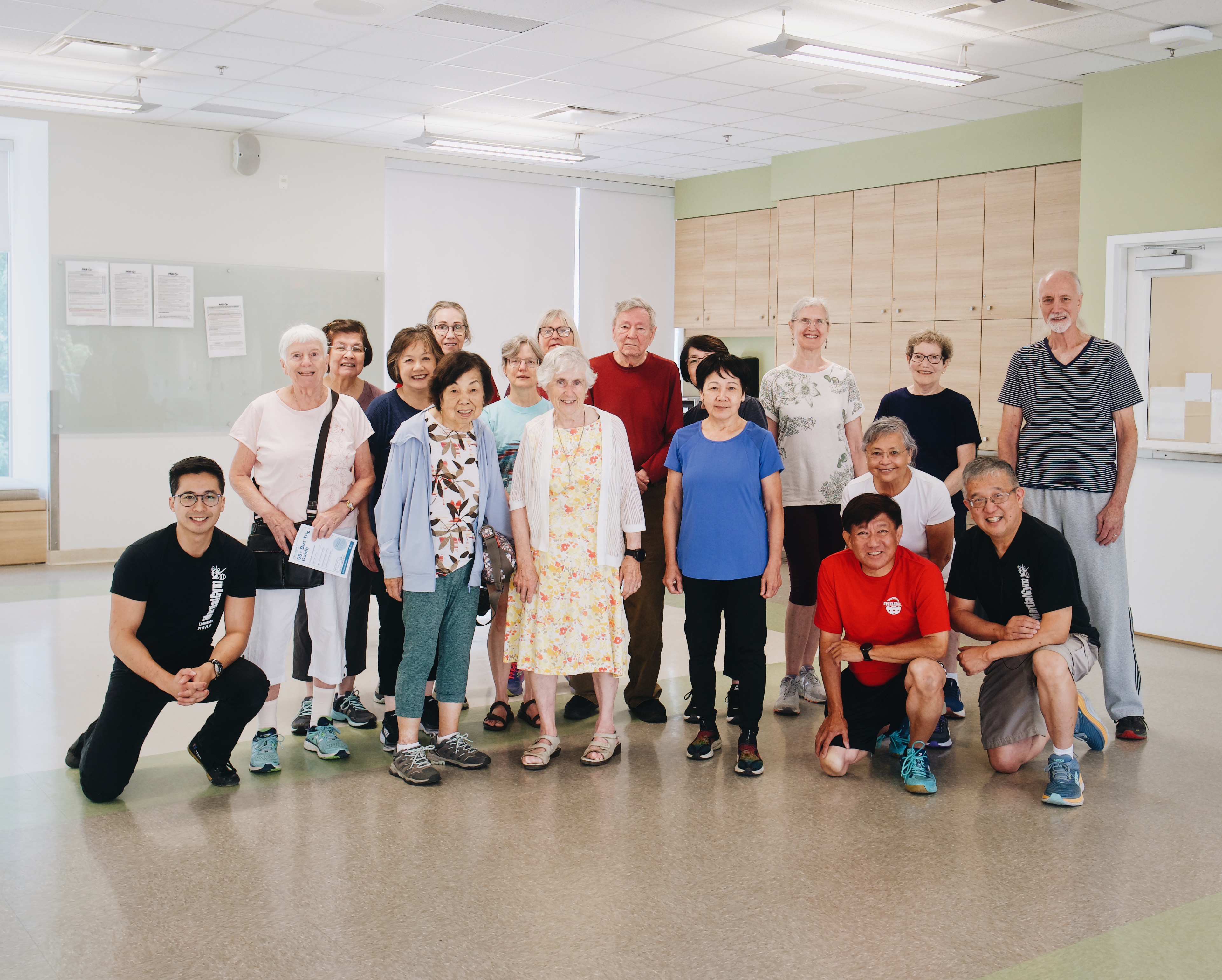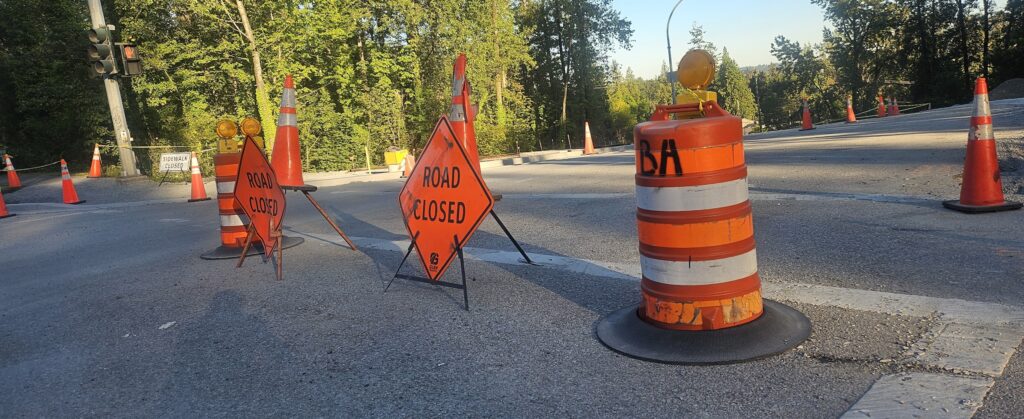EXPERIMENTS AND ADAPTATIONS
Everyone was asked to walk quickly, and at an unexpected moment, they heard the command “STOP!” Some didn’t hear it and kept walking, while others tried to stop but stumbled. This simple experiment demonstrates how we are not always listening and how inertia acts like an invisible force, pushing you forward even when you intend to stop. Learning to counteract this force is crucial. Equally important is developing the habit of listening for verbal warnings like “On your right,” “Behind you,” or “Watch out!”
Next, we moved on to partner drills for the above technique. One person acted as a spotter while the other practiced responding to a gentle push from behind. As a spotter, it’s essential to:
- Understand the technical details of the skill. For example, push the hip back, fold at the hip, bring the arms up from below up close to your chest, etc. Ask if you are not sure.
- Position your hands correctly for support. For this one, one hand on the back while the other at the hip, if your partner stumbles, there is zero distance to catch him/her.
- Gradually increase the difficulty level, but only at the request of your partner.
- Stay close enough to provide assistance if your partner loses balance—without risking both of you falling.
These drills help improve reaction time, body awareness, and overall stability, making them valuable for real-world situations.
DISCUSSIONS
Acquiring resources (or getting help) – Some of us feel shy when approaching strangers, but overcoming that fear is essential. We should practice talking to strangers to build confidence. If you ever feel targeted, one option is to approach someone nearby, pretend to know them, and engage in conversation. This shifts the focus from you alone to a shared situation, making you a less appealing target. No matter how capable you are, you don’t have to face it alone.
Effectively faster by reducing distance or starting earlier – You may not have the same reflexes as a potential aggressor, but you can compensate by minimizing the distance between yourself and safety. One tactic is to cross your arms over your chest while subtly adjusting your hair or clothing. This keeps your hands up in a non-threatening manner, allowing you to react quickly without appearing aggressive.
Confirm intent – Sudden changes in speed, direction, or crossing the street unexpectedly can help determine if someone is following you. If you suspect bad intent, take action: call for help, move toward a crowd, identify possible weapons, and plan your escape route.
Disrupt their target or plan – Throwing an aggressor off their plan can deter an attack. Strategies include:
- Changing your stance to face the same direction as them instead of a confrontational posture.
- Asking a stranger for the time and walking alongside them.
- Creating the impression that you’re not an easy or cost-free target.
- Drawing public attention to yourself.
- Mentioning that you are expecting company soon.
These tactics make you a more challenging target, increasing your chances of avoiding a confrontation.
Limitations of any techniques – Self-defense depends on many variables, such as size difference, arm length, your ability to run, reaction speed, strength, intent, terrain, and your own physical condition and alertness. Like any system, if pushed beyond its limits, it may fail—just as an elevator has a weight capacity. Understanding these limitations helps you make better decisions in a high-stress situation.
SITUATIONS
Scenario – wrist grab (crossover center line grab e.g. right to right low grab with thumbs to the side)
Rub the aggressor’s thumb down and inward towards him. This is applying “the principle of going with the flow”. With a grab, the aggressor’s fingers are closing inward and he most probably apply strong arm and body weight on his palm. So go with it.

Scenario – wrist grab (same side grab e.g. left to right low grab with thumbs up)
Using the technique as described as “fire hose”, go “shoulder-to-shoulder” while hugging your hands together at belly button level.

EXERCISES
Lift heel without rising up – this is NOT intended to be a strengthening exercise. The goal is to improve mobility of the ankles and toes.
Increase the difficulty by tucking one knee up WHILE you are lifting the ankle. You should be able to do this without first shifting your balance before you can tuck the knee up. Everything has to be completed in a single beat.








